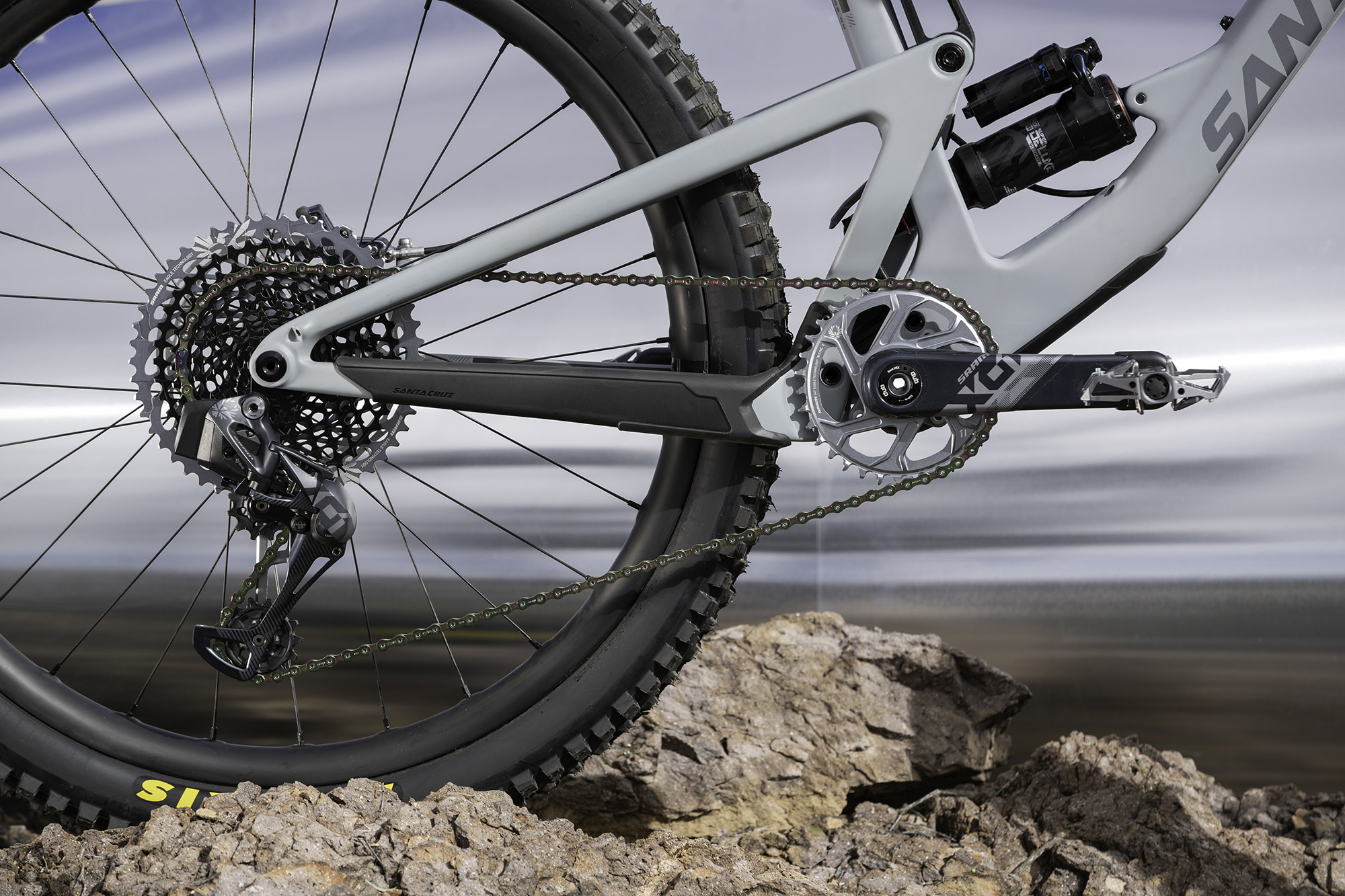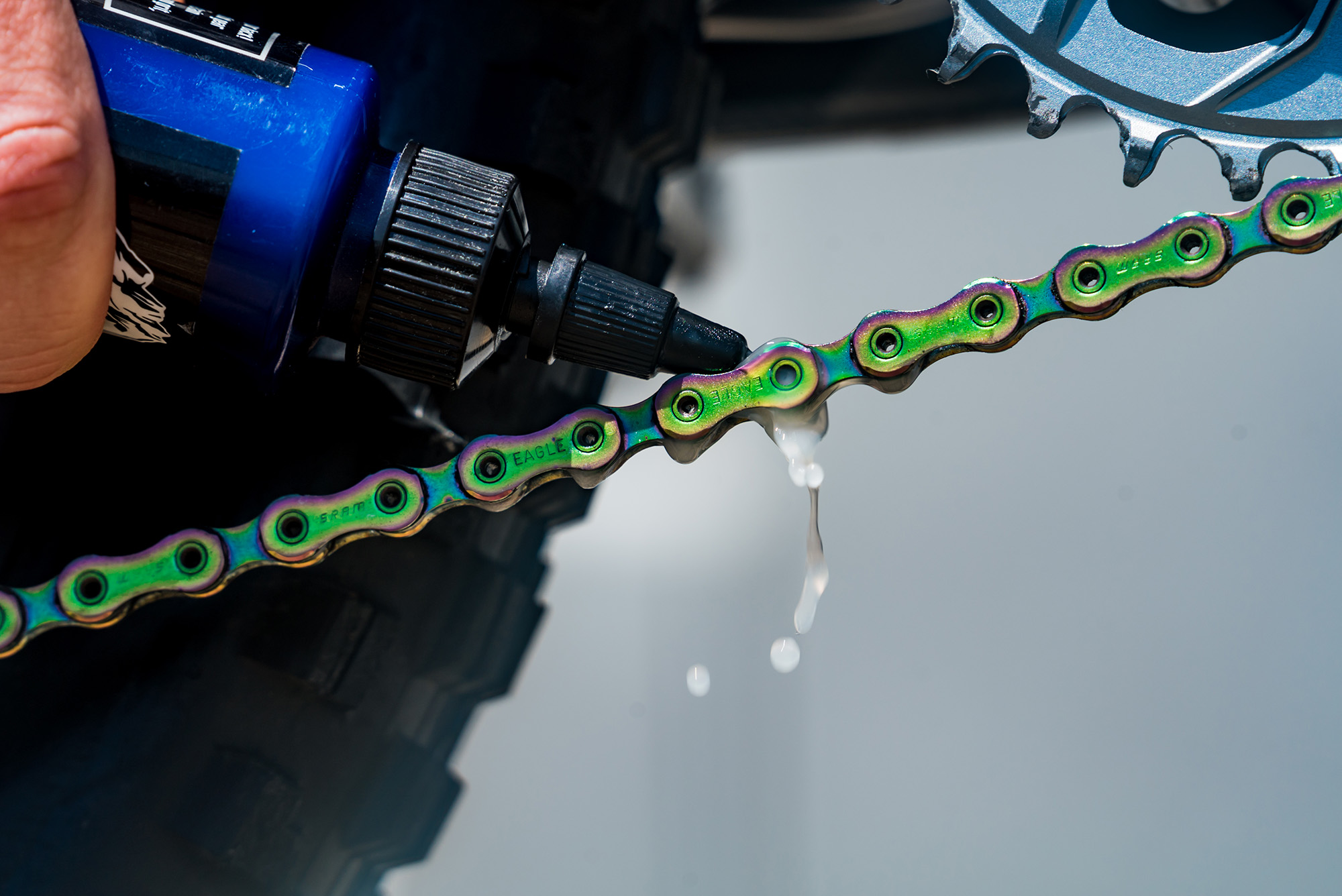Really? Chain Lube? Yup. This entire article is dedicated to one of the simplest bike maintenance procedures, but it’s also probably the most over looked bike maintenance procedure.
Your drivetrain everything to your bike and if your drivetrain isn’t well maintained and always running at its optimum, chances are your next ride is going to turn into a bit of a nightmare. So, lets help you to avoid all that and run through some basics about chain lube.
Words // Nate @ The Bike Co.
 Your cassette, chain and chain ring wear in as a group. It’s more than the anodized finish that wears off as you ride. Chain ring and cassette teeth change shape. The chain “stretches” (wears). You might be able to get a couple chains and chain rings for each cassette. But if the drivetrain is well worn your new chain won’t want to hold power on the older teeth. Shifting is often compromised. It is likely to tick and skip under load. Older chain rings will often hang the chain instead of releasing it at the bottom of the radius creating a tick.
Your cassette, chain and chain ring wear in as a group. It’s more than the anodized finish that wears off as you ride. Chain ring and cassette teeth change shape. The chain “stretches” (wears). You might be able to get a couple chains and chain rings for each cassette. But if the drivetrain is well worn your new chain won’t want to hold power on the older teeth. Shifting is often compromised. It is likely to tick and skip under load. Older chain rings will often hang the chain instead of releasing it at the bottom of the radius creating a tick.
Overall the performance is probably better from the paired cassette, chain, and chain ring rather than mixing and matching new with worn.
Keeping the drivetrain properly lubed will dramatically slow wear and improve performance.
So why is chain lube so important? You’ve got a bunch of fancy metal pieces rolling over each other to power your bike. And as we’ve gone from 9, 10, 11 to 12 speed the systems are narrower and more precise. With smaller tolerances it’s more important to keep your drivetrain adjusted and lubed for maximum service life (and sanity). At our bike shop we consistently see bikes come in for shifting issues with dry drivetrains. Often a quick chain clean and lube correct the minor issues. Lubing the drivetrain each ride notably improves performance.
 All chain lubes are not created equal
All chain lubes are not created equal
Different lubes are available for a variety of riding. Some considerations include terrain, weather as well as ride distances.
The “heavier” or “thicker” lubes work well in sloppier conditions and longer ride times. The downside of heavier lube is it tends to collect more gunk on the chain. If you’re riding in sloppy conditions you, your bike, your gear, etc have probably all collected a bunch of gunk. No issue there.
But if you’re riding in cleaner, drier conditions you might just be taking a bunch of dust and debris home on your chain, derailleur pulleys, etc.
Our local SoCal conditions tend to be dry, desert riding. However, we often suggest heavier lube to longer distance riders as well as those putting down a lot of power. The caveat to this is an understanding they should pay more mind when they clean their chains.
Riders who commonly ride an hour or two in the dry tend to gravitate to the lighter lube options. Less debris pickup keeps the bike looking fresh as well as minimizes excess sand / dirt causing additional wear.
It can sometimes be a bit of a process dialling in your best setup. But, like so many things, the effort is worth it. Tell your better half sorry, family dinners got to wait I’m riding my bike. It’s testing, I hardly even enjoy it… (BTW: I am not a relationship counsellor!)
The following is my personal program. Take it, leave it, adapt it as you like – but I find this gives me the longest life and best performance.
 Our recommended routine
Our recommended routine
Before each ride: I wipe the chain, chain ring and derailleur pulleys with a rag. Occasionally I’ll use a brush, but typically just a rag. Using a lighter lube such as Boeshield T-9 or Dumonde Tech Lite I backspin a couple revolutions lubing both inner and outer plates. A new step I’ve added, which has had interesting results in overall performance, is every week or two I use the Dumonde Tech Original Formula as a lube. This is a heavier lube which a lot of our pro riders like for longer days with more power. I don’t have their power or time for long rides lately so it’s a bit more lube than I really need. That said, it’s almost like a tune up in a bottle. The heavier lube is notable on the drivetrain’s performance and noise. If possible, I like to let the Original Formula sit over night before a ride. But honestly that’s not typically possible. If I plan a ride something tends to come up… So, most the time the lube whether light or heavier goes on, gets a wipe and we’re off riding. With any lube it’s good practice to wipe the excess off prior to riding. All the lube on the side of the chain is really likely to do is collect dust and dirt.
These simple practices along with an occasional bike wash have my drivetrains performing better longer into their service life.
Odds & Ends
When I first started riding, I would remove the chain and degrease it occasionally. I’ve quit doing that. At first, I stopped mostly from a time stand point. However, I’ve grown to think that aggressively degreasing the chain actual increases the wear rate. I don’t have any real science behind that – but less work and longer lasting (at least according to my receipts) work for me. If I rode in sloppier conditions, I would probably want to more thoroughly clean my drivetrain now and then. Personally, I would look at a more aggressive bike wash program rather than a degreaser though.



